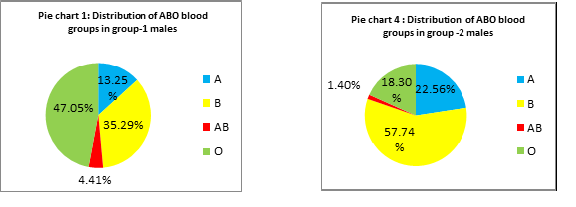
International Journal of Preclinical and Clinical Research
Year: 2020, Volume: 1, Issue: 1, Pages: 17-22
Original Article
C K Akshaya1, Vickram2*, D Divya3
1 Post graduate, Kannur University, Kannur, Kerala
2 Professor of Biochemistry Basaveshwara Medical College & Hospital, Chitradurga, Karnataka
3 Associate Professor, Department of Biochemistry, Basaveshwara Medical College & Hospital, Chitradurga, Karnataka
*Corresponding author
Email: [email protected]
Received Date:26 November 2020, Accepted Date:15 December 2020, Published Date:21 December 2020
ABO and Rh blood group systems have been associated with a number of diseases including type-2 diabetes mellitus (T2DM). Epidemiological studies have inconsistently associated ABO and Rhesus (Rh) blood groups with T2DM risk. To assess the distribution of ABO and Rh blood groups among type-2 diabetic subjects and to check the potential association between ABO and Rh blood groups with T2DM. This small retrospective case-control study was conducted at DM WIMS Hospital, Wayanad. One-year data (from Jan-18 to Jan-19) of fasting, postprandial or random plasma/serum glucose, HbA1c, ABO and Rh blood groups of Non- diabetic and type -2 diabetic subjects were collected from the Hospital Clinical Laboratory Medicine department. Among 280 randomly selected data, 147 are non-diabetic subjects, and 133 are confirmed and known cases of type 2 diabetic mellitus. Subjects with Blood group B has the highest distribution percentage among group-2 (59.39%) in comparison with group-1 (34.02%), followed by A (19.55%), O (18.79%), AB (2.27%). Statistical analysis using Chi-square test among ABO and Rh blood groups between group-1 and group-2 showed a significant (p< 0.001) association of blood group “B +ve” and least association of blood group “O +ve” with T2DM. However, the Rh Blood groups evaluation for T2DM showed no clear association, as both Rh +ve and Rh -ve were uniformly distributed in the groups. The ABO and Rh blood groups may have a possible role to play in the development of T2DM. The subjects with B + ve blood group are at greater risk for T2DM and O + ve blood group individuals are at lower risk for T2DM.
Keywords: Blood groups; ABO blood groups; Rh blood groups; Type 2 Diabetes Mellitus; distribution; association
© 2020 Akshaya et al. This is an open-access article distributed under the terms of the Creative Commons Attribution License, which permits unrestricted use, distribution, and reproduction in any medium, provided the original author and source are credited.
Published By Basaveshwara Medical College & Hospital, Chitradurga, Karnataka.
Subscribe now for latest articles and news.